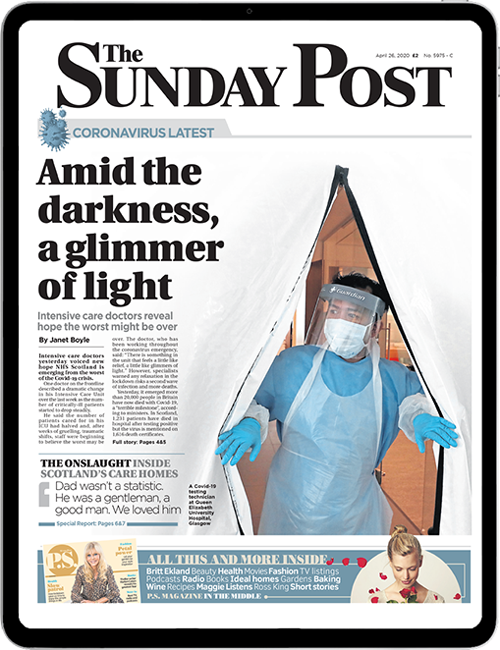
Care homes across Scotland are ramping up fees – and blaming Chancellor Rachel Reeves’ increase to employers’ National Insurance contributions as the single biggest driver of the rise.
Residents are facing hikes of up to 9.5% this year, with the most expensive homes now charging £3,000 per week.
Although Reeves said she would not raise tax, in last year’s budget she did announce employers’ National Insurance contributions (NICs) would rise from 13.8% to 15%, which has put a huge strain on the care sector, where staff wages make up a major part of overall costs.
Now Scotland’s major charity for the elderly has warned the rises risk making residential care unaffordable for some elderly people.
Katherine Crawford, chief executive of Age Scotland, said: “We are concerned that passing the cost onto self-funded care home residents could put long-term residential care beyond the reach of many older people.”
The sector has also faced increased costs for insurance, food, medical supplies, maintenance and materials as well as energy bills and the increase in the National Living Wage (NLW).
HC-One, one of the UK’s largest operators with 275 care homes specialising in dementia, nursing and residential care has increased costs by 9.5% for self-funding residents.
It said: “The increases to NICs and the NLW will have a significant and exceptional impact on our costs moving forward. Like many companies and individuals, we are also experiencing considerable cost increases in essential areas such as food and medications, all of which are vital to the daily operation of our care homes.
“As such, like many other providers across the sector, we have made the difficult decision to raise fees, while doing our utmost to balance the difficulties of fee increases for our residents and their families with the need to ensure our care colleagues are fairly rewarded for the important job they do, and that our homes remain financially stable.”
The cost of private care homes varies, costing from £970 per week. Some of the most luxurious care homes can cost up to £2,750 per week.
Barchester Canmore Lodge Care Home in Dunfermline starts from £2,169, with Woodlands Care Home, Aberdeen costing from £2,415 per week. Fees depend on individual care requirements.
Both Abbotsford Care and Randolph Hill, who operate care homes across Scotland, have also increased costs.
Fees for Randolph Hill cost between £1,800-£1,900 per week for a standard room, but deluxe rooms are to £2,400 per week. Randolph Hill said that the increase in NICs will put an additional 4.7% on their wage bill and will mean that the fee increase will need to be significantly more than 5% this year.
It said: “As a company, our increases had been consistently below 5% before the pandemic. During and afterwards, we have had larger increases both with increased purchases needed, but primarily because of higher inflation. This year we had anticipated keeping any increase below 5% as inflation had fallen [although wage increases within the sector are still higher than general inflation].”
Private homes often tend to be funded by the individual, through the sale of their home or pension, but some are publicly funded – around three quarters of HC-One’s residents are.
Abbotsford said it had been a difficult but necessary step to increase weekly fees given the rise in operating costs.
“The growing disparity between what local authorities pay and what it actually costs to deliver quality care, results in services currently receiving almost £200 less per resident, per week than is needed to meet even the most basic sustainability threshold. That level of underfunding isn’t just unsustainable, it’s unfair, and it places enormous strain on services.
“The recent decision by the government not to support an exemption for care providers from the increase in employers’ NI contributions has only intensified that pressure.
“At a time when the sector is crying out for support in order to make the changes it wants to make, moves like this actively undermine our ability to do what we want to do in our services, training, and make those long-term improvements in care.
“We understand that these are challenging times for everyone, but when policy decisions continue to overlook the realities of frontline care, it puts the entire system at risk. Sustainable care should not be a luxury – it should be a given.”
Scottish Care, the umbrella body for the private care sector, said soaring costs made it very difficult to avoid putting up fees.
It said: “A key challenge is the ongoing underfunding of social care. The rate of pay for care workers is set by the Scottish Government and falls far below what it costs to deliver care and support. The amount paid by government to social care providers is less than the actual cost of delivering care, forcing providers to pay workers the lower rate set by government. This is particularly concerning for the coming year, as employer National Insurance increases have not been sufficiently factored into government cost models.
“Scottish Care calls on the Scottish Government to truly value social care by funding it appropriately.”
The Scottish Government said: “We remain deeply concerned about the impact the UK Government’s increase in employers NI contributions will have on social care in Scotland, which we estimate will cost the sector over £95m.
“Our 2025/26 budget provides an additional £125m to enable adult social care workers delivering direct care in commissioned services to be paid at least £12.60 an hour, in line with the Real Living Wage. This takes our total investment in improving social care pay to £950 million.”
Availability is already a challenge, but it is about to become more difficult
By Katherine Crawford, chief executive of Age Scotland
We understand that private care homes, like all businesses, are going to be affected by higher energy bills and the increase in employer National Insurance contributions next month. But we are concerned that passing the cost onto self-funded care home residents could put long-term care beyond the reach of many older people.
Private care homes make up 76% of the 775 care homes in Scotland and are home to more than 25,000 older people, so the financial situation is precarious for all concerned. It is important that older people and their families are involved with discussions about raising care home fees.
The availability of affordable care home places in Scotland is already a huge challenge. The number of operational care homes has fallen by 18% over the past decade, with rural communities, in particular, struggling to provide enough places. It is clear that delivering good quality social care in care home settings cannot be done without sustainable and substantial investment.
We know that local authority budgets are under strain, but unless money is invested to keep council care homes open for older people who do not have the resources to pay private care home fees, the situation is going to deteriorate further. Scotland needs greater availability of care homes and community care services. Rising costs makes that more difficult to achieve and we are very worried about what the future holds for older people who need – and deserve – affordable residential care.

Enjoy the convenience of having The Sunday Post delivered as a digital ePaper straight to your smartphone, tablet or computer.
Subscribe for only £5.49 a month and enjoy all the benefits of the printed paper as a digital replica.
Subscribe © MIKE WILKINSON
© MIKE WILKINSON